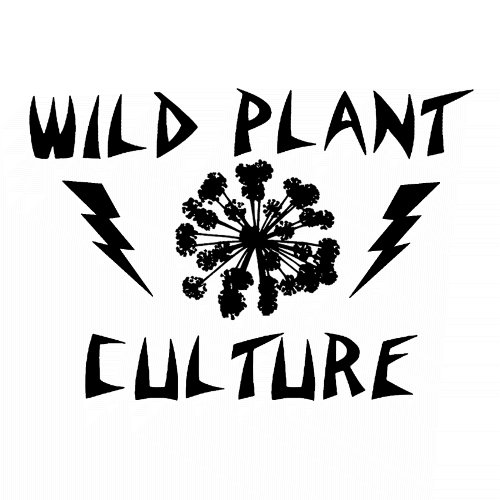Wild Ginger and the Sacred Question

Kerry and I were nearing the end of our workday, having walked five or so miles and up and down a couple of thousand feet. We were doing botanical survey work in at Pyramid Mountain, a county park near Boonton, New Jersey. We had just passed a beaver pond -- one that seemed to have been recently expanded, so that live trees stood improbably in the middle of the water and the shoreline lapped up against upland species like American chestnut and Christmas fern.
We meandered into the uplands, taking note of plant species here and there but generally covering familiar territory. Then I spotted a strange gouge in the landscape.
An almost sheer wall of rock stood astride a linear cut in the earth, the rock rising vertically to my left some fifteen feet or so, the gouge maybe twenty paces long. The measurements are vague in my mind. I yelled out to Kerry that I had found an old quarry cut.
There's another quarry cut at the park, now wooded over, and clad in diminutive wildflowers on the shallow soils of its rim. Hepatica, pussytoes, dittany, southern wood violet and others grow here. It's known as the limestone quarry (actually marble), though its mineralogy is rich and seemed quite varied to my amateur eyes[i].
So here I was at this newfound quarry cut, presumably also marble, looking up at the sheer rock face on my left. And practically dripping down the stone were big drifts of wild ginger, their horizontal heart-shaped leaves set among copious moss and the vertical fronds of marginal woodfern and Christmas fern.
Now here's the strange part. Ultimately, we spent about two hundred hours (collectively) surveying this park, through the entire field season. And nowhere else (in almost 2,000 acres) did we see a single wild ginger plant.
* * *
Wild ginger (Asarum canadense) is a denizen of nutrient-rich woods, a lover of limestone and other geological substrates high in macronutrients like calcium and magnesium. And here it had improbably found a single suitable outcropping in a large area dominated by presumably unsuitable gneiss geology.
Seeds and eliaosomes of wild ginger
Wild ginger seeds are dispersed by ants. The seeds attract ants by means of an eliaosome - a fleshy linear attachment that looks like a partially transparent worm, rich in lipids and proteins. The eliaosome is consumed by ants, and then the seed discarded some distance from the parent plant. But not too far: typical dispersal distances for ant-dispersed woodland herbs are less than one meter, though wild ginger dispersal distances of up to 35m have been recorded.
Given that we surveyed close to 2,000 acres of contiguous habitat and found no other individuals of wild ginger, how the hell did it get there?
* * *
About a decade ago Rachel and I attended Tom Brown Jr.'s Tracker School. Tom Brown walked us through the rudiments of the art of tracking, reconstructing a story about a particular set of tracks -- who had made them, where the animal had been headed, what its intention and mood had been, how long ago this happened. He read the earth like a book. He called it an inquiry into the Sacred Question. That being "what happened here"?
My feeling is that the Sacred Question as it pertains to plants is pretty much: "how the hell did this plant get here"?
* * *
But dispersing across a few hundred or thousand acres to find a suitable chunk of rock is hardly the most remarkable journey made by wild ginger.
A fascinating paper entitled "Seed Dispersal and the Holocene Migration of Woodland Herbs" raises the question of how ant-dispersed species like wild ginger could have repopulated the northeast in the relatively short period of time since the recession of the glaciers.
At the end of the last Ice Age, approximately 16,000 years ago at most, wild ginger's range had been pushed south, probably to the Gulf Coast of the southeastern United States.
According to author Michael L. Cain and his co-authors, "empirically calibrated diffusion models indicated that over the last 16000 yr A. canadense should only have traveled 10–11 km from its glacial refugia." [Emphasis mine].
However, wild ginger moved an estimated 1300-1900 km north, and it ranges as far north as Canada.
As to how this occurred, the authors are left to muse about occasional long-distance dispersal events:
[W]e conclude that occasional events leading to long-distance dispersal were of critical importance in the Holocene colonization of northern temperate forests by woodland herbs (see also Wilkinson 1997, who reached a similar conclusion for the postglacial migration of trees). Such occasional events could include meteorological accidents like tornadoes (Webb 1986) and hurricanes (Campbell 1983), and biotic accidents like the transport of seeds in mud clinging to the feet of vertebrates or the ingestion and subsequent excretion of viable seeds by birds that fly long distances (e.g., Darwin 1859, Webb 1986, Wilkinson 1997).
* * *
How did wild ginger arrive on a mossy rockface of limestone in a park in Morris County? That questions spirals back in history at least to the last glaciation, or maybe to the formation of the limestone itself. In knowing the story of the wild ginger, we'd know the story of our part of the world. What happened here? That is the Sacred Question.
[i] '[T]he "Limestone Quarry" shown on park maps is one of the few areas of marble in the eastern part of the Highlands... the marble at Montville was quarried in the 1800s for flux for the iron furnaces of Boonton and for agricultural lime. It was well-known at the time for its wide variety of minerals, especially is gem-quality serpentine.' Harper, David P. Roadside Geology of New Jersey, p. 201


